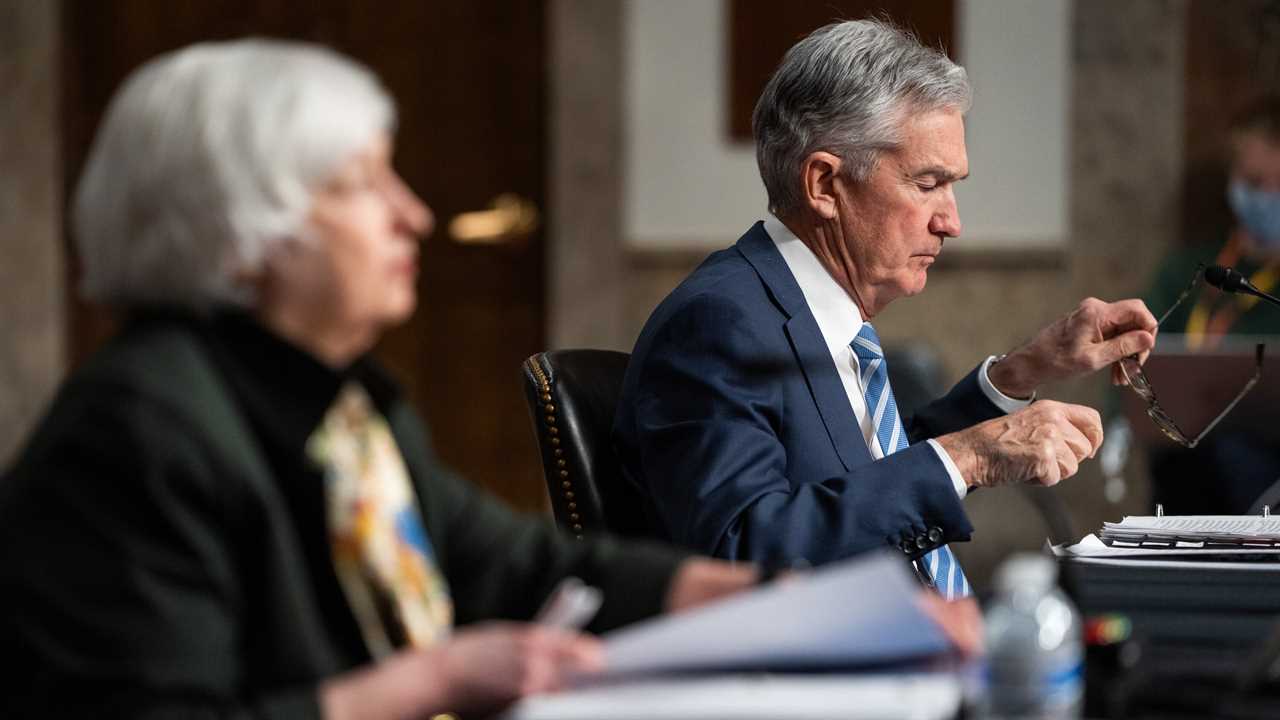
Federal Reserve policymakers said they will cut back on their stimulus more quickly at a moment of rapid inflation and strong economic growth, capping a challenging year with a pronounced policy pivot that could usher in higher interest rates in 2022.
Central bank officials released a policy statement and a fresh set of economic projections at the conclusion of their two-day meeting. The statement showed that officials decided to slow the monthly bond-buying that they had been using throughout the pandemic to keep money chugging through markets and to bolster growth more rapidly.
Officials are slashing their purchases by twice as much as they had announced last month, a pace that would put them on track to end the program altogether in March. That decision came “in light of inflation developments and the further improvement in the labor market,” according to the policy statement.
Speeding up the end of the Fed’s bond-buying will position the central bank to more promptly raise its policy interest rate — a more traditional and more powerful tool — if officials decide that doing so is necessary to keep inflation under control. The Fed’s economic projections suggested that officials expected to make three interest rate increases next year.
“With inflation having exceeded 2 percent for some time, the committee expects it will be appropriate to maintain this target range until labor market conditions have reached levels consistent with the committee’s assessments of maximum employment,” the Fed said in its new statement — making it clear that officials feel their inflation goals have been achieved and putting the onus for rate increases squarely on labor market progress.
The Status of U.S. Jobs
The pandemic continues to impact the U.S. economy in a multitude of ways. One key factor to keep an eye on is the job market and how it changes as the economic recovery moves forward.
- Jobs Report: The American economy added 210,000 jobs in November, a slowdown from the prior month.
- Analysis: The number of new jobs was below expectations, but the report shows that the economy is on the right track.
- Jobless Claims Plunge: Initial unemployment claims for the week ending Nov. 20 fell to 199,000, their lowest point since 1969.
- Holiday Hiring Scramble: From signing bonuses to higher wages to college tuition, retailers are using perks to attract workers ahead of the holidays.
By slowing bond-buying and moving toward rate increases, the Fed is adding less juice to the economic expansion. While officials spent much of the year laying out a patient path for winding down their pandemic-era help for the economy, they have turned more proactive in recent weeks as they have become more worried that a burst in inflation this year could linger. The Fed is supposed to keep prices stable while fostering a strong labor market, and those two goals are increasingly in tension.
Consumer prices climbed 6.8 percent in November from a year earlier, the quickest pace of increase since 1982. The Fed’s preferred inflation gauge has shown slightly slower gains but has also moved up sharply.
Fed officials initially expected a pop in prices this year to fade. Instead, pressures have broadened beyond goods affected by the pandemic, which have fallen victim to tangled supply chains, and into rent and shelter. In those big categories, upward trends can prove more lasting. Wages are climbing, as are consumer inflation expectations, which could also help price increases to persist.
The Fed has been watching the evidence accumulate warily, though most officials still hold out hope that inflation will fade back toward their 2 percent annual average goal as global shipping routes clear through backlogs, factory production increases to meet demand, and consumers shift toward more normal spending patterns after scrambling to buy couches, cars and stationary bikes during the pandemic.
But officials had begun to back away from helping the economy so much, announcing the initial plan to slow their bond-buying program following their November meeting.
Then, Jerome H. Powell, the Fed chair, signaled late last month and early in December that the central bank was increasingly focused on managing the risk that rapid price gains might linger.
“I think the risk of higher inflation has increased,” Mr. Powell said while testifying before Congress in late November.
Fed officials have also taken heart in the speed of the labor market recovery. The jobless rate has fallen to 4.2 percent, down sharply from the double-digits heights it reached early in the pandemic.
Still, many people remain out of the labor market — some because they have retired, but others because of virus fears or a lack of child care. That is making judging how close the economy is to the Fed’s goal of “maximum employment” a more complicated task.
Mr. Powell at times has suggested that full employment could be reached next year, but he also has expressed uncertainty around that call.
“I think there’s room for a whole lot of humility here as we try to think about what maximum employment would be,” he said at a news conference in November.
The Fed chair will take reporter questions at a news conference scheduled to start around 2:30 p.m.
Did you miss our previous article...
https://trendinginthenews.com/usa-politics/us-waited-months-to-book-cia-prisoners-at-guantnamo-bay






